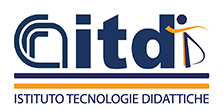In this project we will develop, experiment with and validate a methodology for children's interaction with computational construction kits. These will include the existing Programmable LEGO Brick and new programmable bricks currently being developed by LEGO, whose developments will be adjusted according to the progress of this project. Learners are particularly likely to create new ideas when they are actively engaged in making external artefacts that they can reflect upon and share with others. Children need to work both with make-believe and concrete worlds, and also need to use and develop various languages and media. It is easier to grasp something by looking at it from various viewpoints and describing it in a variety of materials. In this way, one develops a range of skills. Accordingly, new tools should enrich the range of ideas children can explore.A major goal of the Construction kits made of Atoms and Bits (CAB) project is to design, develop and validate a methodology for cybernetic construction kit easy enough to use for four-year-old children and challenging for eight-year-olds, i.e. a construction kit that children can grow with. A cybernetic construction kit is a complex tool and there is a large design space to explore (hardware of the brick, programming environment, sensors, inspiration materials, etc.).
In the CAB project we envisage a child-centred approach where a two-year longitudinal field test in schools will provide input and constraints for the exploration of the design space. Insights on the role of a "cybernetic construction kit" in children's learning process, such as studies on children's theory of control, is central to guiding the design choices for further development of the "programmable brick" research agenda. The presence of programmable bricks evokes new images, promotes different identities for cybernetic subjects, and relaunches questions on the relationship between living beings and the inanimate. Hence, it will be particularly important to understand what cybernetic objects mean for children aged four to eight. We will start the field testing with the existing LEGO MINDSTORMS construction kit. The field test will provide input and constraints for the exploration of the design space; test reports identifying pedagogical desiderata will guide the design and development of the cybernetic construction kit methodology. The technological development will follow a rapid prototyping methodology, allowing feedback from the field test to trigger effective review and revision of the design decisions. To intertwine technological development and field testing, we will maintain an on-line multimedia repository documenting children's ideas, theories, and ways of using a cybernetic construction kit. To this end we will build a community of construction kit users involving both children and adults, novices and experts. The CAB consortium is co-ordinated by the Assessorato Educazione, Formazione ed Università at Comune di Reggio Emilia (Italy). This body is internationally recognised as one of the leading institutions in early childhood education, and will be responsible for the research on learning. The Comune di Reggio Emilia and the School of Education & Communication (HLK), Jönköping University (Sweden) will be conducting extensive field testing in seven schools, involving several hundred four to eight-year-old children. The LEGO Group (Denmark) and the Istituto Tecnologie Didattiche - CNR (Italy) will implement findings in their ongoing development of cybernetic construction kits for young children, thus providing prototypes for testing the methodology.
The CAB partners will make the methodology developed in the project available at varoius levels:
- nationally through their existing co-operation with the respective Ministries of Education;
- internationally via an interactive multimedia database of selected testimonial documents describing how the developed construction kits have been validated in daily use in pre-schools and the first years of elementary school.
Subsequently, the LEGO Group plans to exploit the results of this research in future products targeted for eight-years-old and even younger children.
 Italiano (Italia)
Italiano (Italia)  English (United Kingdom)
English (United Kingdom) 

